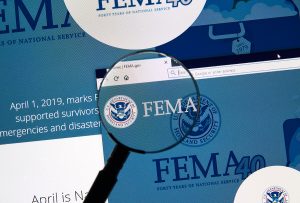Changes to the National Flood Insurance Program

Government Announces Changes
The Federal Emergency Management Agency (FEMA) recently announced an overhaul to the risk rating system for flood insurance, which could lead to drastic rate changes. Many homeowners rely on the National Flood Insurance Program (NFIP) for protection from water damage, but recently announced reforms could drastically change insurance rates. In the future, insurers could consider a home’s unique flood risks when determining rates, which could lead to drastic increases that may even impact your home’s value.
These changes represent some of the most significant reforms to the NFIP—a program that has gone largely unchanged since the 1970s. While the reforms are expected to help communities better plan for extreme weather, they could increase premiums for homeowners in high-risk areas.
An Overview of the Changes
The most significant change to the NFIP relates to how risk is calculated for insurance buyers. Historically, flood insurance prices are set based on whether or not a home is inside the 100-year floodplain. That will all change when the government rolls out its pricing changes—changes FEMA is dubbing Risk Rating 2.0.
Under the Risk Rating 2.0 initiative, premiums will be tied to the actual flood risks facing individual homes. FEMA will leverage private-sector data to assess flood threats per home and set prices accordingly.
In addition, FEMA will incorporate the cost of rebuilding a structure into its insurance rates. What’s more, the new system will take into account a wide range of variables, including the potential impact of different types of flooding and a home’s distance to a coast or river.
FEMA has said that, following these changes, homeowners will see insurance rates that more accurately reflect their potential flood exposures. This means that properties with the highest risks will pay the most, which is important when you consider that flood claims often outpace premiums, burdening the NFIP with $30 billion of total debt in 2017.
With the changes, 5 million policyholders under the NFIP will likely see rate changes. While some individuals may have lower rates, those with homes in risky areas are likely to see higher insurance costs and diminished property values.
FEMA has said they are evaluating ways to minimize the financial burdens of the new system, including phasing in the program to help transition policyholders. In addition, Congress has already set limits on how much FEMA can increase premiums. The changes, which alter the way homeowners are charged for flood risks, could go into effect as early as April 1, 2020.
Contact us to learn more about your flood insurance options. We will know more information on this topic after the National Flood Conference in June 2019.